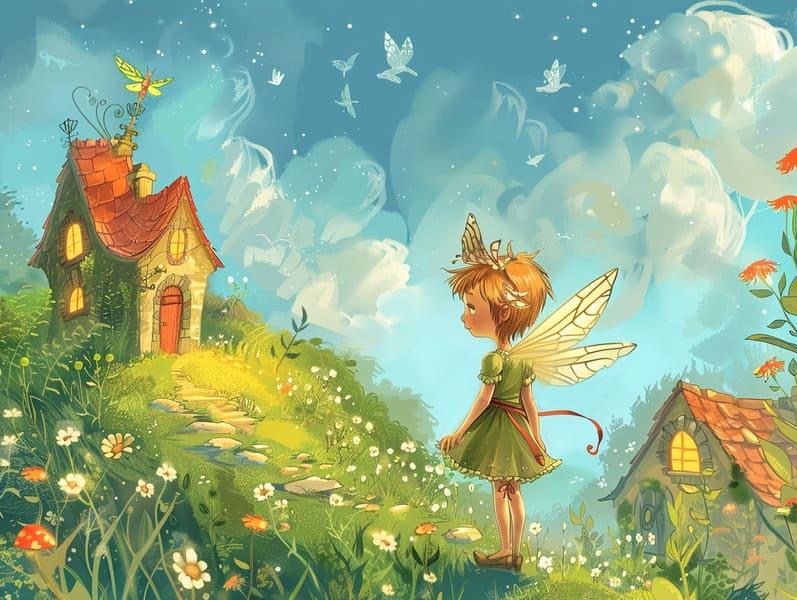The Start of Historical Fairy Tales and the Lasting Loveliness.
The Start of Historical Fairy Tales and the Lasting Loveliness.
Blog Article

Popular fairy tales have ancient roots. These tales have been spoken from one generation to the next millennia before they were ever recorded. They developed from a variety of civilizations, including Western traditions. They were initially disseminated among mature audiences, often carrying themes and messages pertaining to the societal norms and beliefs of the time.
The Brothers Grimm, Jacob and Wilhelm (the Grimm brothers), were among the first to compile and release many of these beloved tales. Their compilation, "Grimm's Folk Tales," included narratives like "Cinder Maid," "Hansel and Gretel," and "Snow-White and Rose-Red," which have since become pillars in the world of famous fairy tales. Similarly, Hans Andersen's whimsical tales, such as "The Sea Maid," and "The Duckling's Story," have touched hearts worldwide, guaranteeing their place in the pantheon of iconic fairy tales.
Though they are old, classic fairy tales remain as important as ever, especially as children's bedtime stories. These charming stories are now available in multiple formats, including richly illustrated books, captivating animations, and online fairy tales.
Their lasting appeal can be credited to several charming aspects:
Key Lessons: Old fairy tales often convey important moral lessons. Stories like "The Tale of the Boy Who Cried Wolf" teach the benefit of being truthful, while "The Tale of the Tortoise and the Hare" demonstrate the qualities of resolve and humbleness. These tales offer young readers clear distinctions between ethical and unethical, helping to shape their moral compass in a gentle yet meaningful way.
Empathy and Awareness: Classic fairy tales frequently feature heroines facing challenges and problems, prompting listeners to identify with their struggles and rally behind their triumphs. For instance, "The Story of Beauty and the Beast" reveals the significance of appreciating inner worth to perceive the true character of a soul, promoting empathy and recognition.
Cultural Comprehension: Many classic fairy tales are saturated in the cultural contexts from which they originated. Discovering these narratives can provide fascinating glimpses into different ways of life, strengthening a sense of global respect and awareness.
Creativity and Imagination: The enchanted elements in ancient fairy tales—talking beasts—invigorate children’s innovations. These narratives transport readers to magical realms, boosting imaginative dreams and a sense of awe that continues a lifetime.
Ancient fairy tales are not only captivating but also informative. They provide bewitching tools in promoting various intellectual fairy tales and emotional capacities in kids. When classic fairy tales are spoken, they advance language proficiency by presenting new phrases and detailed sentence structures. This practice also develops hearing perception and attention span, as kids follow the story, anxious to see what happens next.
Furthermore, discussing the themes and characters of classic fairy tales can foster evaluative skills and logical thinking. The young are educated to spot patterns, anticipate outcomes, and catch on to cause and effect. These contemplations also assist kids convey their thoughts and feelings, cultivating their emotional intelligence.
In today’s electronic age, the existence of digital fairy tales has made these fairy tales more attainable than ever. Internet resources and web apps extend extensive collections of famous fairy tales that can be seen or listened to anytime, anywhere. Fairy tales narrated are particularly liked, featuring an entertaining method for children to take part in these spellbinding stories. Sound books and read-to-me stories take characters and settings to life, often augmented by bewitching musical scores and soundtracks that raise the tale-telling adventure.
The lasting allure of old fairy tales lies in their ability to modify to today's society while maintaining their basic principles. Contemporary modernizations of these stories often introduce more different figures and modern settings, making them accessible to today’s audience. However, the basic principles of fortitude, understanding, and lawfulness remain unchanged, continuing to touch young readers of all ages.
Ancient fairy tales also offer a sense of comfort and understanding. They grant access to a ordered narrative with a obvious beginning, middle, and end, often ending with the settlement of conflicts and the triumph of justice over injustice. This dependability can be relieving for young ones, affording a sense of steadfastness in an fluid world.
Old fairy tales continue to spellbind and edify new generations, maintaining their fascination and relevance in modern society. As nighttime stories for kids, they impart a perfect blend of delight and instruction, promoting moral values, empathy, and creativity. The abundance of online storybooks and the in demand status of fairy tales read out loud promise that these traditional narratives remain available to new generations.
By holding onto and telling these stories, we continue to exalt the rich tapestry of tradition and cultural heritage. Whether you are discovering a gorgeously illustrated book, accessing a online library, or listening on an narrated book, the allure of old fairy tales is always within reach. These tales teach us of the unchanging effect of fairy tales and its ability to bond us across time and space.
Be it you are exploring a richly illustrated book, perusing a online collection, or listening through an read-aloud book, the grandeur of ancient fairy tales is always within reach.
These narratives remind us of the everlasting impact of stories and its ability to hold us together across generations and cultures, weaving a spell that charms and informs alike.